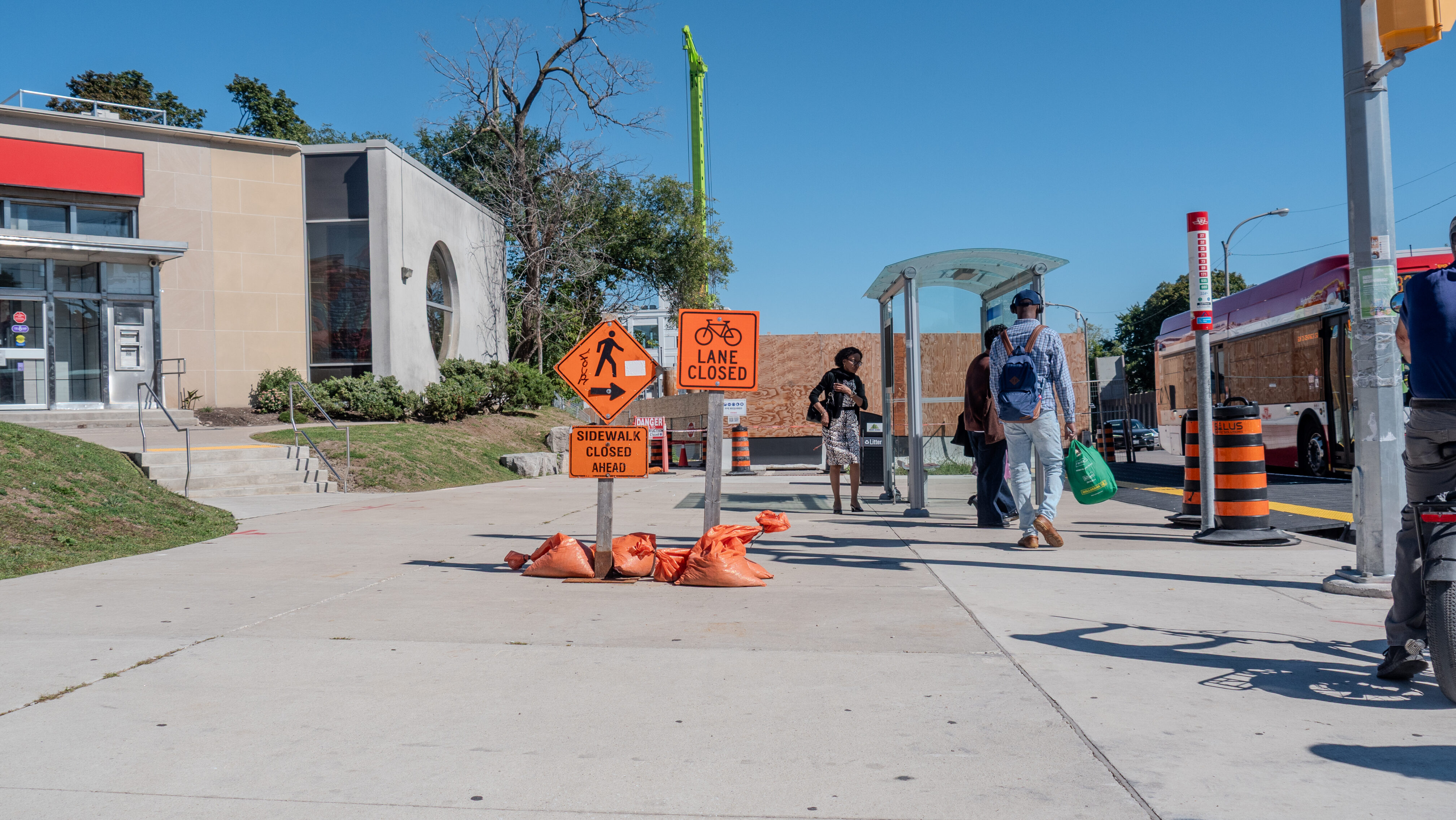THE GREEN LINE
ORIGINAL STORY
Mimico-Queensway residents pave the way for neighbourhood road safety plan
The Green Line team drove west to Mimico-Queensway to learn how residents worked with their local councillor and the City of Toronto's Transportation Services to build a neighbourhood-specific road safety plan.
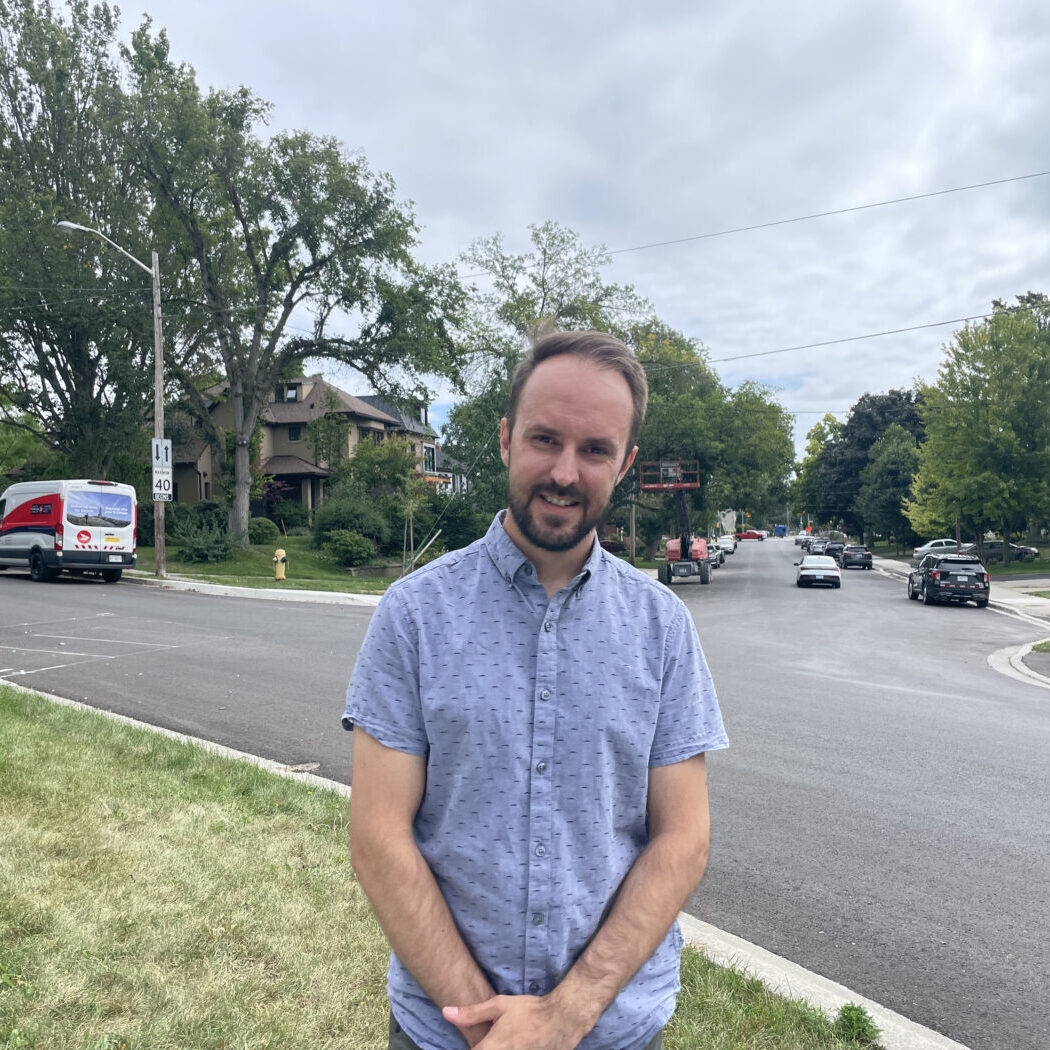
Eric Vanderwal, a resident of Mimico-Queensway, stands at the intersection of Stanley and Superior Avenues.


Amanda Seraphina James Rajakumar
Indian immigrant with a post-grad in journalism from Centennial College. Now living in Grange Park, meeting new people, and hearing different stories. Has four names, so it’s a pick-your-player situation.
October 4, 2024
How many times have you had to watch out for vehicles in your neighbourhood? Residents in Mimico decided it was time to stop looking over their shoulders and start taking road safety into their own hands.
Bordered by the busy Gardiner Expressway, Mimico-Queensway has seen a lot of traffic spill into its streets over the years.
In 2015, residents decided to speak out against speeding vehicles. Nine years later, the Mimico Neighbourhood Mobility Plan is now underway. It includes traffic-calming measures, such as speed humps, reduced speed limits, increasing signage and adding road design improvements like curb extensions.
Michelle Berquist, manager of area transportation planning for the City of Toronto Transportation Services, says the Mimico Neighbourhood Mobility Plan was the first-of-its-kind neighbourhood-wide road safety plan.
“What was new about the Mimico Neighborhood Mobility Plan was looking at the neighbourhood at scale. It's not that the city hadn't done that before, but in the past, the city might have relied on consulting services to do that kind of precinct look or zone look," she explains. "This was our first time bringing that work into the city itself and working amongst our colleagues at City Hall.”
Previously, Berquist adds, the city was effective in addressing speeding issues on one street but not for surrounding streets. So, the Mimico plan helped the city go from looking at one street to looking at the broader system that this individual street is part of.
But it wasn't an easy road to get there.
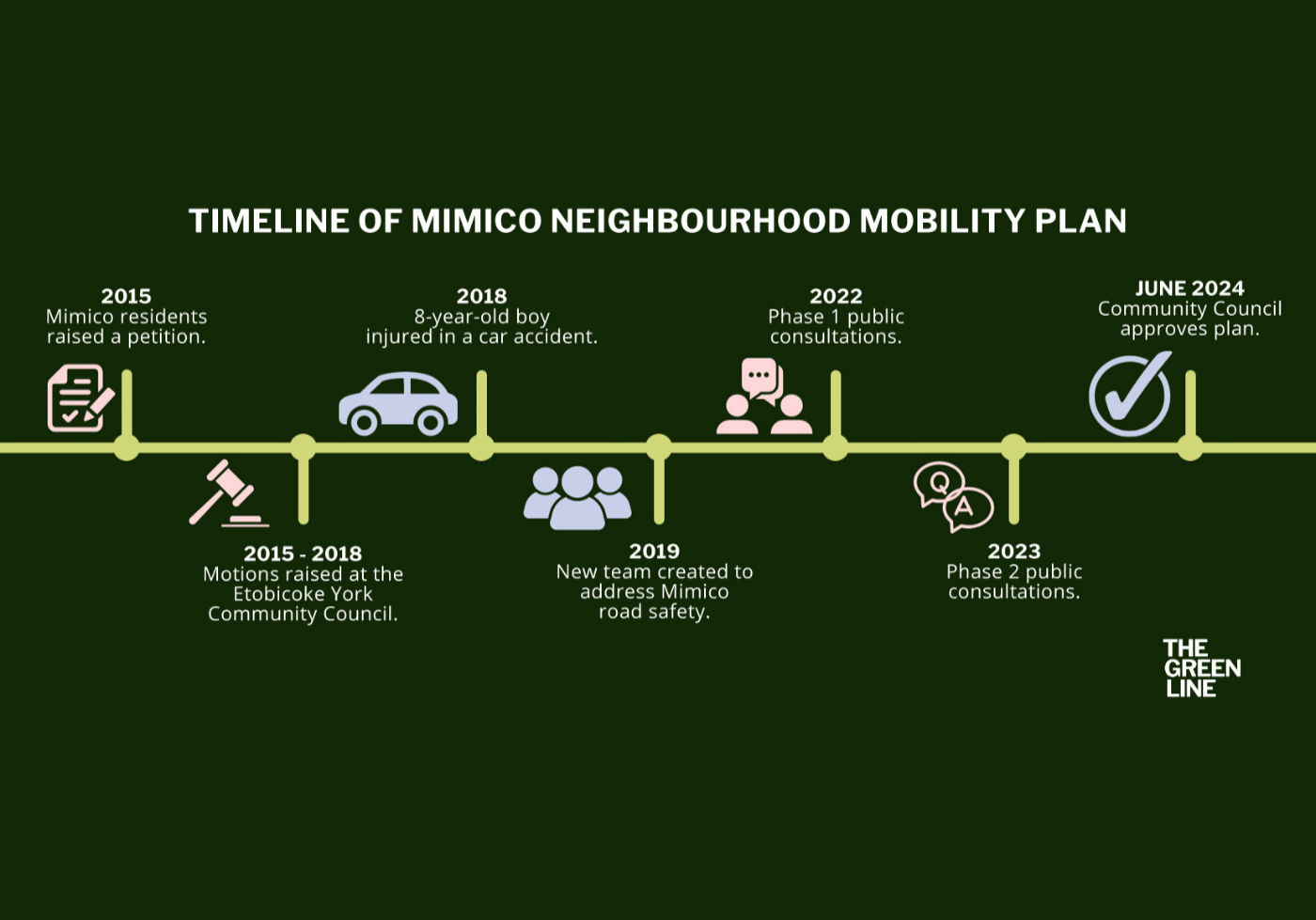
Timeline of the Mimico Neighbourhood Mobility Plan from 2015 to June 2024.

Residents first spoke to former city councillor Mark Grimes who raised motions on their behalf at Etobicoke-York Community Council since 2015. The situation escalated in 2018 after an eight-year-old boy was injured in a car accident, which prompted the start of a traffic study one year later. Finally, after community consultations through 2022 and 2023, the community council approved the Mimico Neighbourhood Mobility Plan this past June.
“This was very much a community grassroots-led initiative. I think that it was really through the support of community members primarily that we have gotten to where we are today," Mimico resident Eric Vanderwal says.
"I think it was difficult for the councillor and for transportation staff — perhaps not living in this area, not being intimately familiar with the problems that existed — to understand what residents were really so fanatical about.”
Vanderwal and other residents came together to start a petition in 2015, which led to an initial traffic study by the city that ultimately determined that there wasn’t a need for traffic-calming measures. But these residents felt the city’s conclusion didn’t accurately reflect their experience on the streets, and were concerned conditions would worsen since tens of thousands of residents were about to move into Humber Bay Shores, a neighbourhood by the Lakeshore dense with condos.
Vanderwal adds that the plan “required a lot of pressure, a lot of follow-up and a lot of persistence from the community to move this initiative forward.”
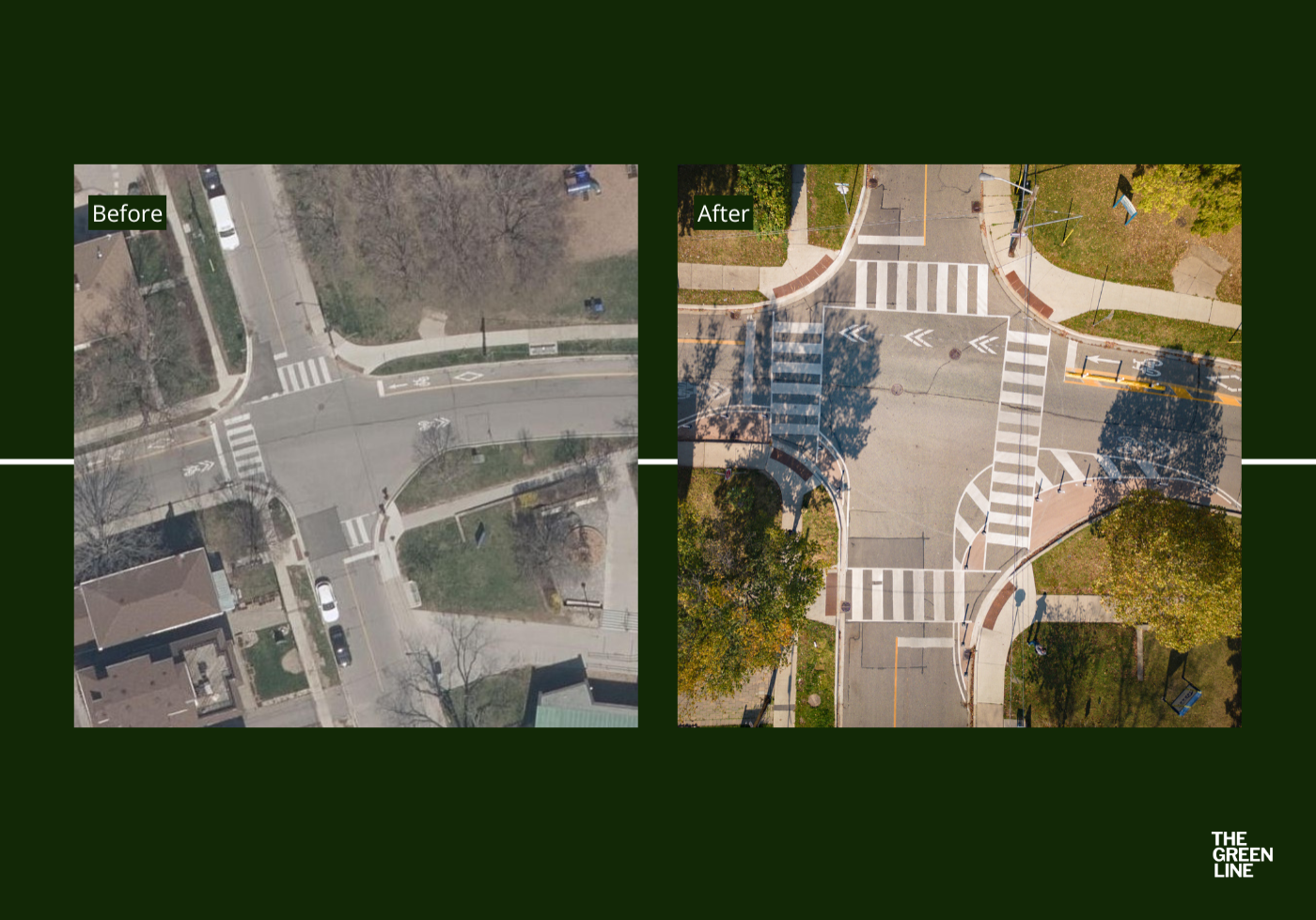
Before and after photos of road safety measures implemented at Station Road and Stanley Avenue.

All traffic-calming measures from the Mimico Neighborhood Mobility Plan are slated to be completed by the end of summer 2025. Meanwhile, some recommendations are still under review, such as designated pick-up and drop-off locations for schools, adding new pedestrian crossings and restrictions on street parking.
“Changing some signs on the speed limits, adding some stop signs, some cushioning, some speed bumps — the community doesn't look at these things as they take seven years to come to terms with. We would have liked to see that stuff happen quicker," says Michael Majeski, vice-president of the Mimico Residents Association.
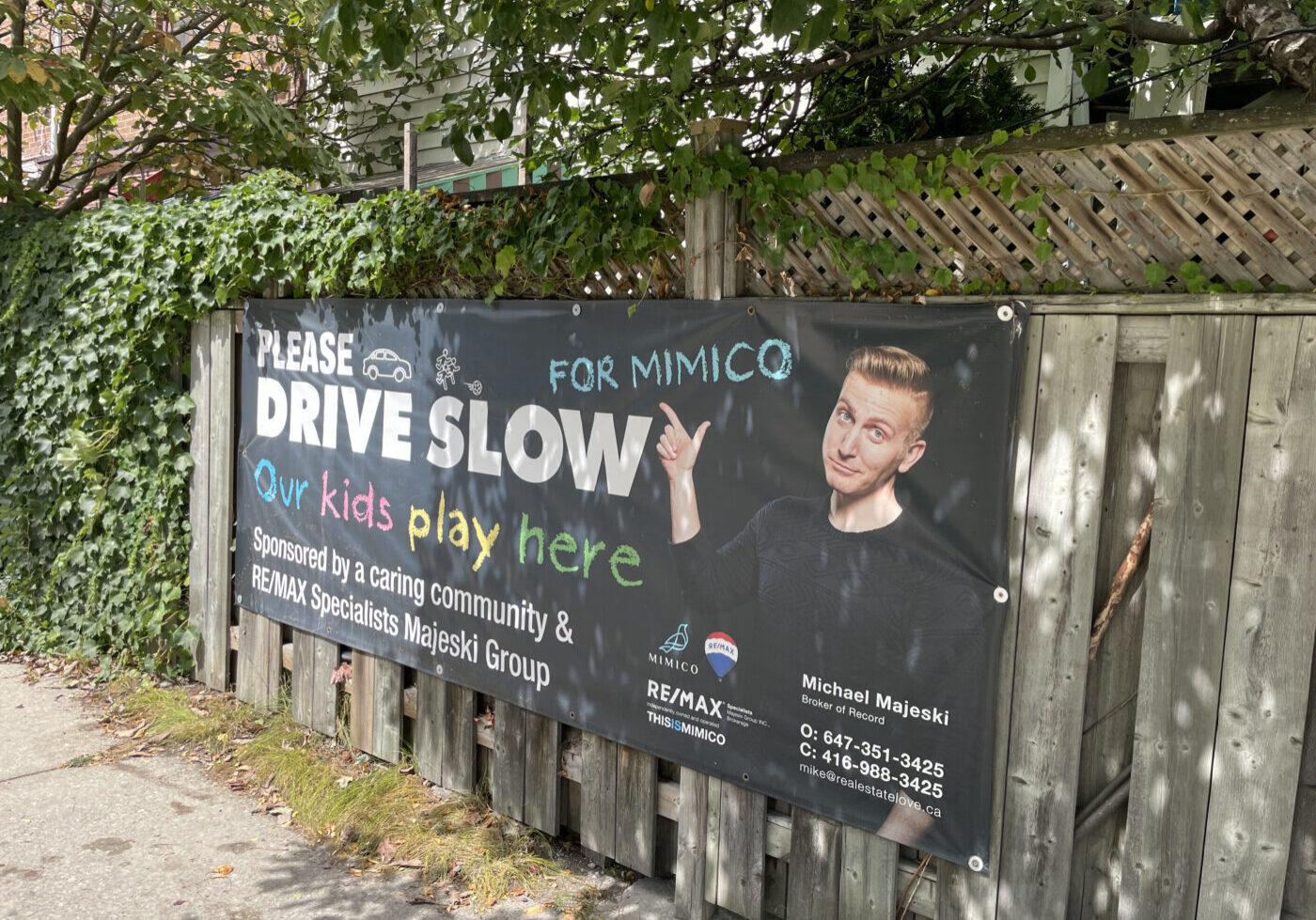
Michael Majeski, vice-president of the Mimico Residents Association, featured in a safe-driving banner in the Mimico-Queensway neighbourhood.

Eventually, Mimico paved the way for the City of Toronto's Neighbourhood Streets Plan program, which launched in 2023. Every year, five neighbourhoods that nominate themselves get selected for a road safety plan. The 2023 to 2024 program cycle included Elms-Old Rexdale, Oakridge, Oakwood Village, Malvern West and Don Valley Village.
“With every study, we learn new techniques and we expand on the kinds of things that we can offer. So, it's a continual improvement process, and we're really excited to bring this to other neighbourhoods across Toronto,” Berquist says.
Fact-Check Yourself
Sources and
further reading
Don't take our word for it —
check our sources for yourself.
Here's your chance to support the only independent, hyperlocal news outlet dedicated to serving gen Zs, millennials and other underserved communities in Toronto. Donate now to support The Green Line.
